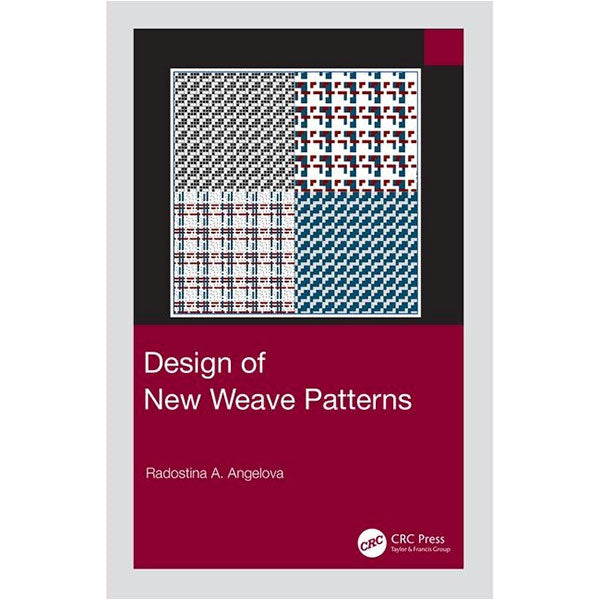Design of New Weave Patterns
Author: Radostina A. Angelova
This book presents a systematic study on methods used for the creation of weave patterns for simple structures. Firstly, it explains known techniques for designing new weave patterns classified as patterns merge, motifs, patterns insertion and change of the displacement number. These are discussed as possibilities to create different textures and weaving effects supported by figures of patterns, colour view, and fabric appearance simulation. Secondly, it explains original methods for design of new weave patterns based on Boolean operations, musical scores, written texts and braille alphabet, including transformations performed, advantages/disadvantages, possible applications and designs.
Radostina A. Angelova is an associated professor at the Department of Textiles, Technical University of Sofia (TU-Sofia). She is also an associated researcher at the Centre for Research and Design in Human Comfort, Energy and Environment at TU-Sofia. She is a lecturer in spinning technologies and machines, weaving technologies and machines, and design of yarns and fabrics. Angelova holds an MSc degree in textiles and clothing (1994), a PhD in technology of textile materials (2001), and a DSc in technology of textile materials (2015). She authored more than 100 papers, 4 textbooks, and 1 book.
Product Details
- Series: Heritage Crafts and Skills
- Paperback: 128 pages
- Publisher: Pen and Sword History (November 1, 2019)
- Language: English
- ISBN-10: 0367347857
- ISBN-13: 978 0367347857
- Dimensions: 6.2 x 0.5 x 9.2 inches
Related Items
Table of Contents
PART 1 CLASSICAL METHODS FOR DESIGN OF NEW WEAVE PATTERNS
1: Brief history of weave patterns
2: Elementary weaves
2.1 Fabric construction and specifics of the weave pattern
2.2 Elementary weaves
3: Derivatives of the elementary weaves
3.1 Basics
3.2 Derivatives of the plain weave
3.3 Derivatives of the twill weave
3.4 Derivatives of satin and sateen weaves
4: New weave patterns based on patterns merge
4.1 Weave patterns for stripе effects
4.2 Weave patterns for cell-like effects
5: New weave patterns based on motifs
5.1 Weave patterns for cell-like effects
5.2 Weave patterns for diagonal effects
5.3 Weave patterns for zig-zag effects
5.4 Crepe weaves
6: New weave patterns based on patterns insertion
6.1 Weave patterns for rib-like effects
6.2 Weave patterns for diagonal effects
6.3 Crepe weaves
7: New weave patterns based on change of the displacement number
7.1 Weave patterns for diagonal effects
7.2 Weave patterns for curved effects
7.3 Weave patterns for zig-zag effects
PART 2 NEW METHODS FOR DESIGN OF NEW WEAVE PATTERNS
8: New weave patterns based on Boolean operations
8.1 The concept of the method
8.2 The Boolean operations in weave patterns’ design
8.3 Features of the implementation of the Method
8.4 Assessment of the new weave
8.5 Design experiments
8.6 Application of the method
9: New weave patterns based on musical scores
9.1 The concept of the method
9.2 Design method
9.3 Assessment of the new weave
9.4 Design experiments
9.5 Application of the method
10: New weave patterns based on text interpretations
10.1 The concept of the method
10.2 Transformation approaches
10.3 Possible variations of the method
10.4 Design experiments
10.5 Assessment of the new weave
10.6 Application of the method
11: New weave patterns based on the Braille alphabet
11.1 The concept
11.2 Possible variations of the method
11.3 Design experiments
11.4 Assessment of the new weave
11.5 Application of the method


